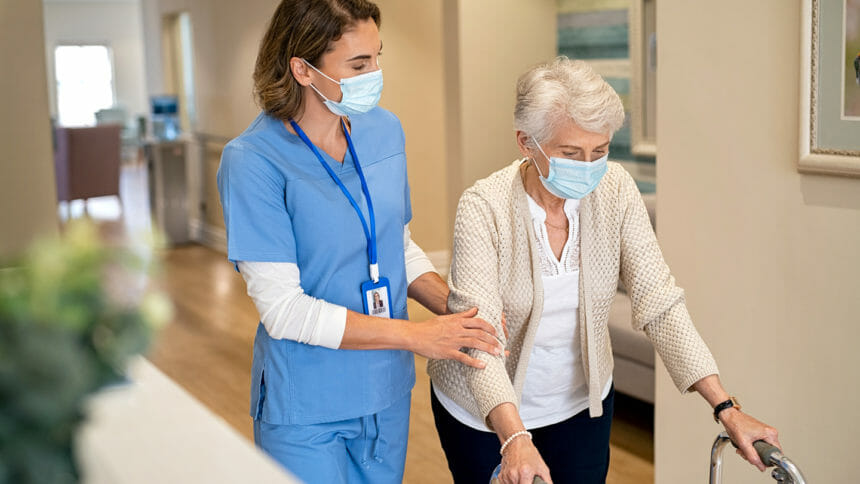
Knowledge of resident-care provider interaction patterns could help nursing facilities better tailor their infection control practices and curb the spread of multidrug-resistant organisms (MDRO), a new study suggests.
The spread of MDROs in nursing homes is a significant safety issue for residents. In order to characterize MDRO transmission risks, investigators studied unit-based resident-provider interaction patterns. To do so, they performed room-based observations and conducted care provider interviews across 25 nursing homes representing 49 care units in seven states.
Along with staff-resident interactions, researchers assessed care type provided and equipment use. They also collected de-identified resident demographics and data on MDRO risk factors such as indwelling devices, pressure injuries and antibiotic use. The study took place in three- to six-month intervals per unit.
Nurses: most care, fewer task types
Care patterns in nursing homes are similar across most unit types except tasks unique to a unit type, reported Nai-Chung Nelson Chang, PhD, of University of Utah and colleagues. Care providers averaged 2.5 interactions per resident per hour in long-term care units and 3.4 per resident per hour in ventilator care units, for example. Certified nursing assistants, nurses and respiratory therapists performed most resident care tasks. Of these groups, nurses provided the most care, but they performed significantly fewer task types per interaction when compared to CNAs.
Care also was less varied in short-stay and ventilator-capable units when compared with long-term care units. But healthcare providers visited residents in these units at similar rates, the researchers added.
Bundling high-contact care
Results suggest that interaction patterns can be a key factor in identifying targets for nursing home infection prevention and control, the authors proposed. Facility-specific solutions could include bundling high-contact care, transitioning to enhanced barrier precautions, or identifying staff who may benefit from infection prevention education on specific tasks, they wrote.
The infectious organisms in question may also determine the success of such IPC strategies, they noted.
“SARS-CoV-2 infection risk is higher with prolonged close contact, suggesting CNAs are at higher risk of being infected and infecting residents given their workflow,” Chang and colleagues wrote. “Conversely, having a larger resident network and performing more high-contact activities such as wound or tracheostomy care, tasks often covered by nurses or [respiratory therapists], may increase risk of contamination with an MDRO.
“This may impact infection prevention training and resource prioritization,” they explained.
Full findings were published in JAMDA.
Related articles:
CDC: C. auris spreading at ‘alarming’ rate in U.S. healthcare facilities
H. pylori more antibiotic-resistant since start of COVID: study
Multi-drug resistance is rising in urinary E coli, analysis reveals
WHO: Some superbugs became more antibiotic resistant during the pandemic
CDC: Deaths from antibiotic-resistant bacteria jumped 15% in 2020
New antibiotic effectively treats complicated UTIs, trial finds




